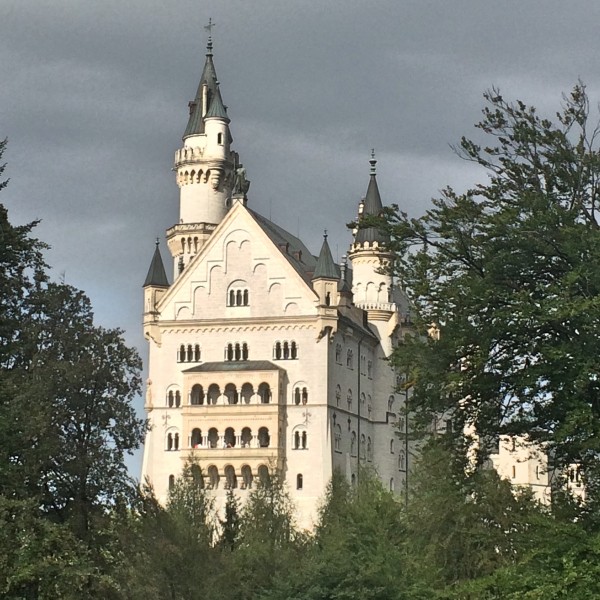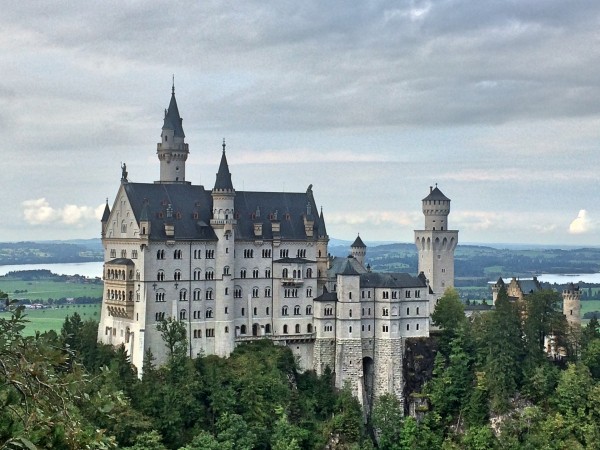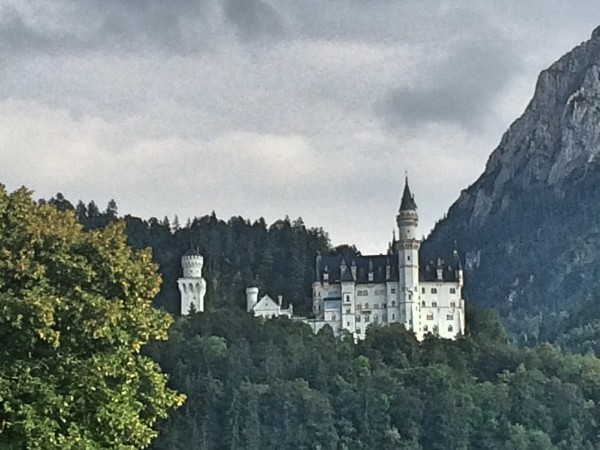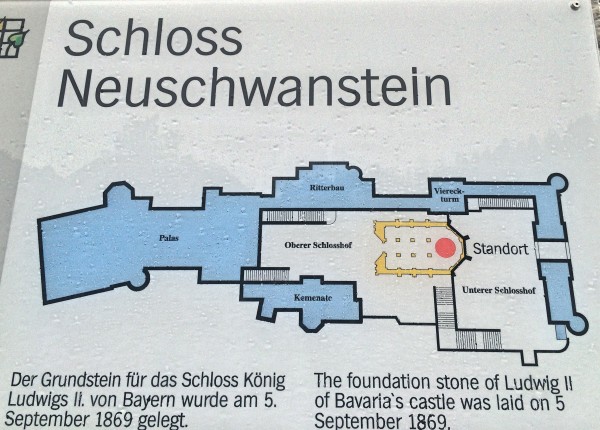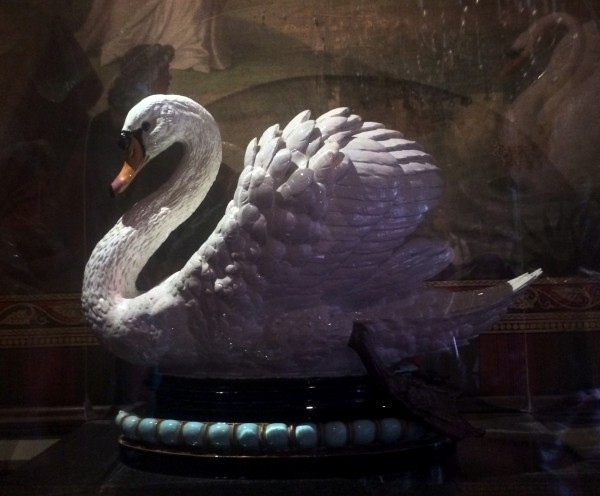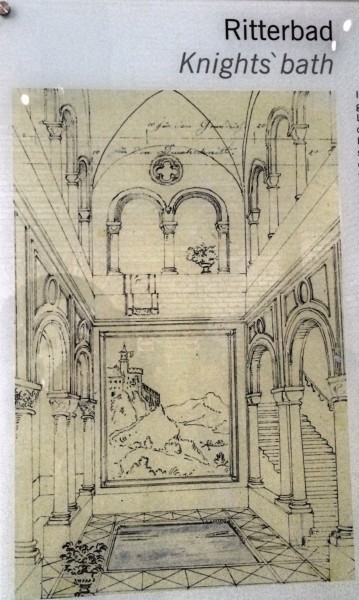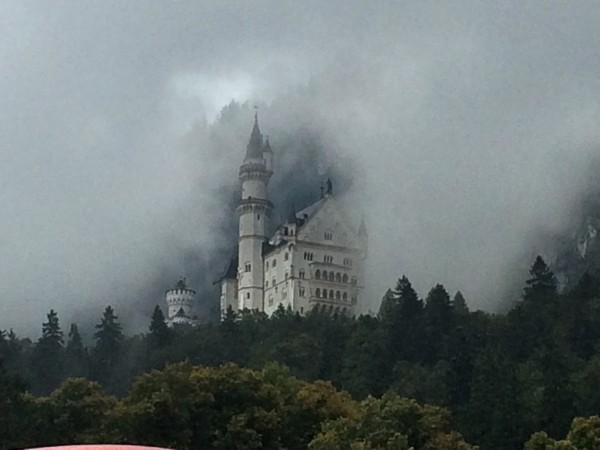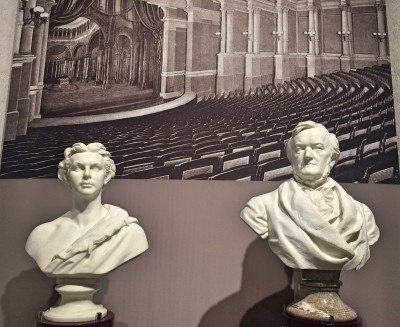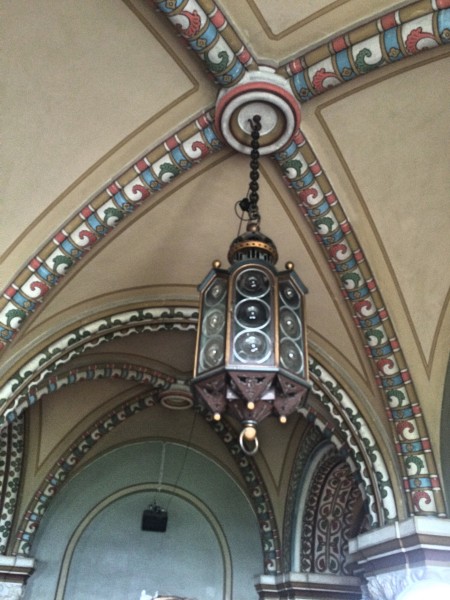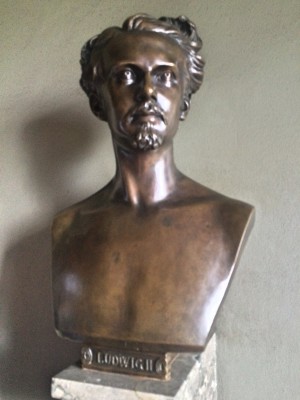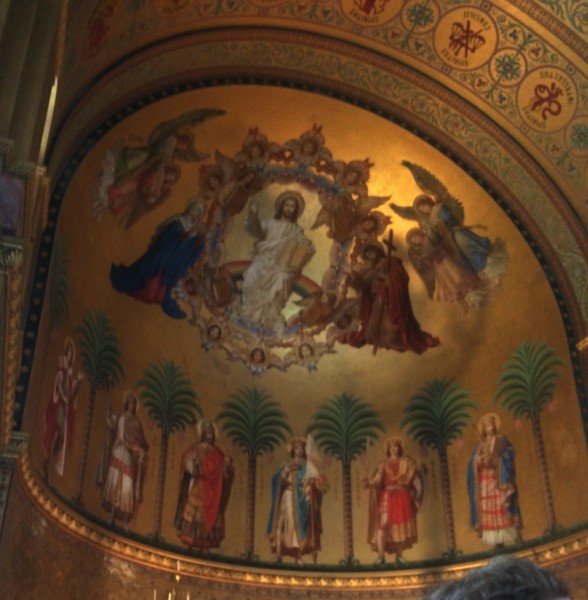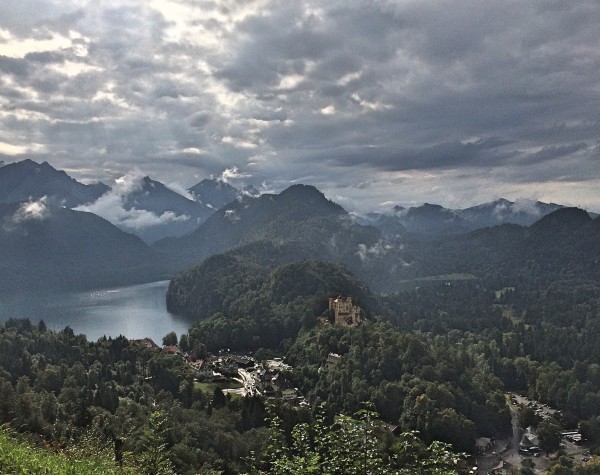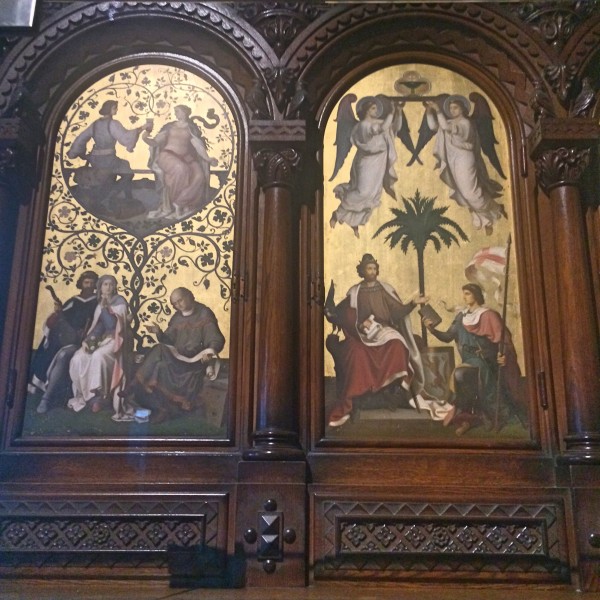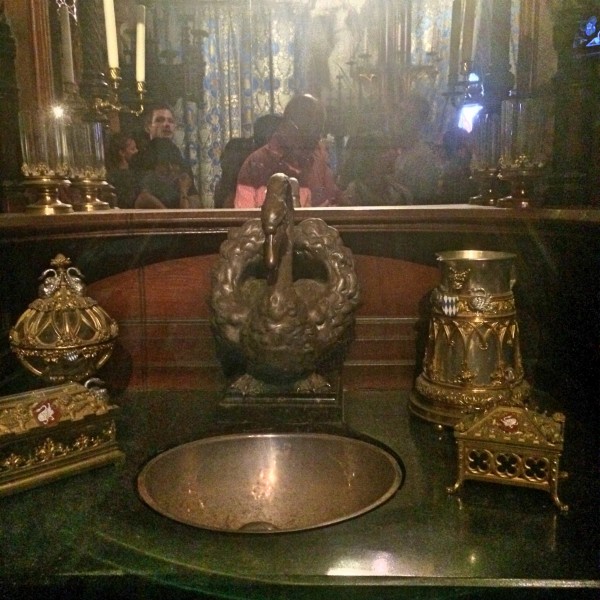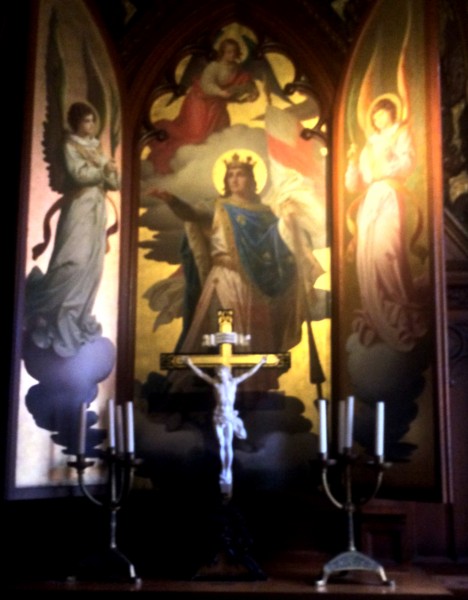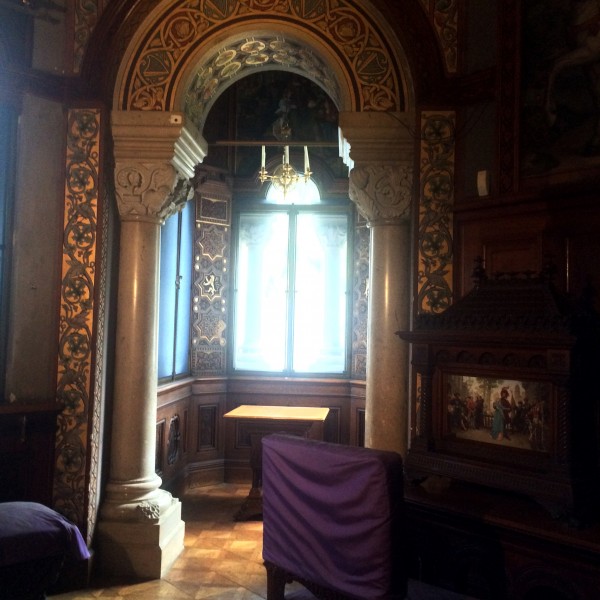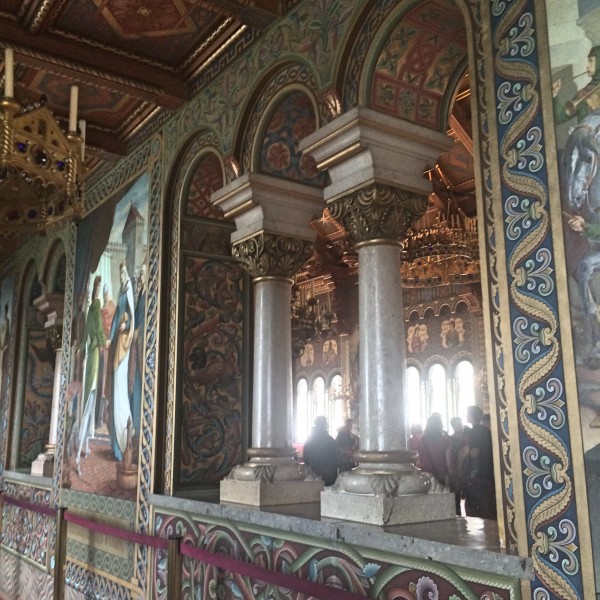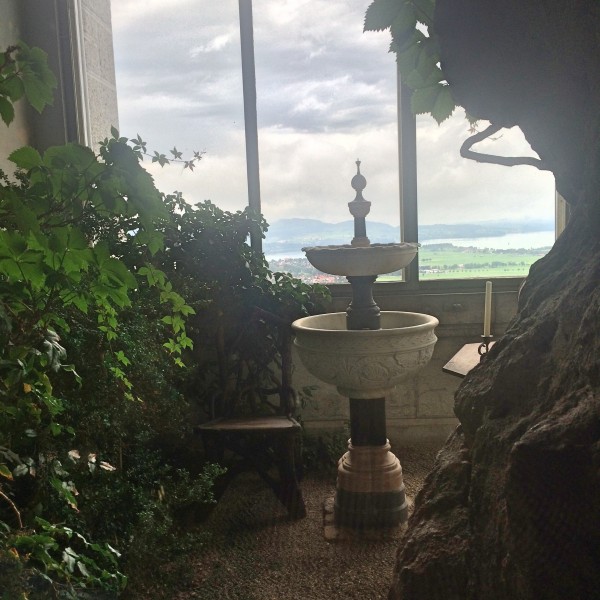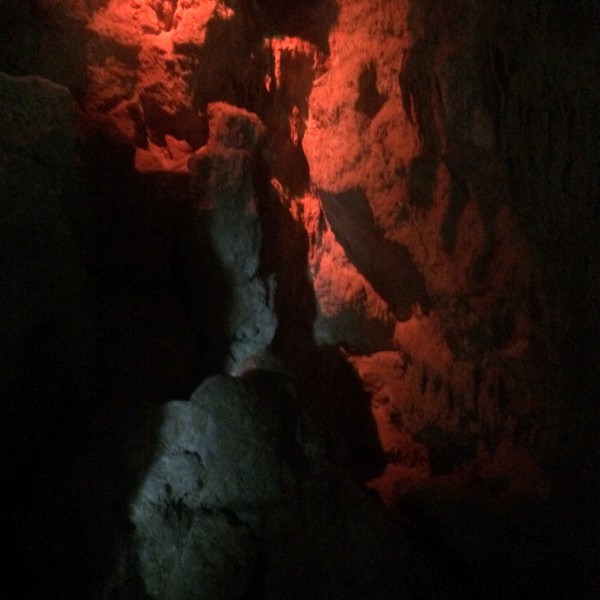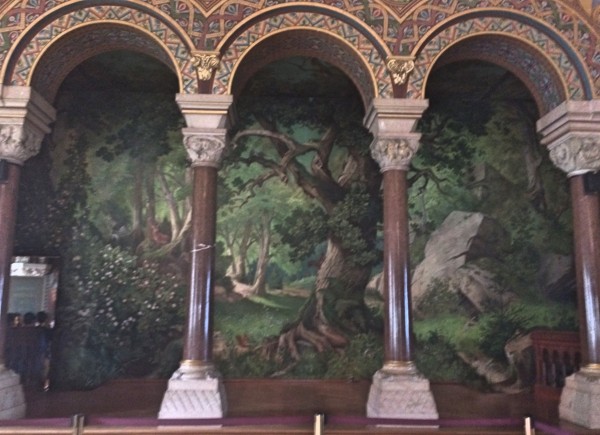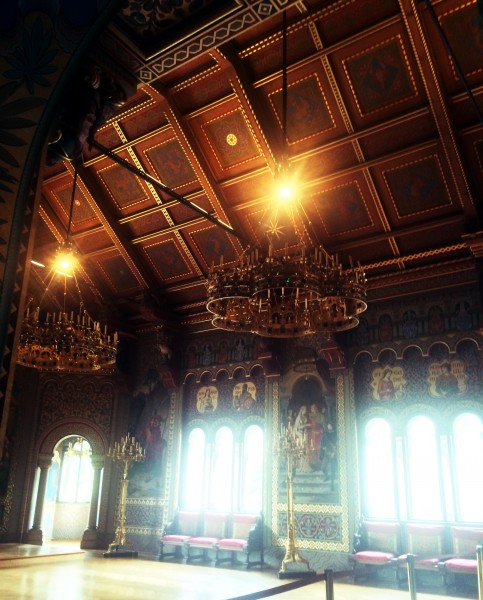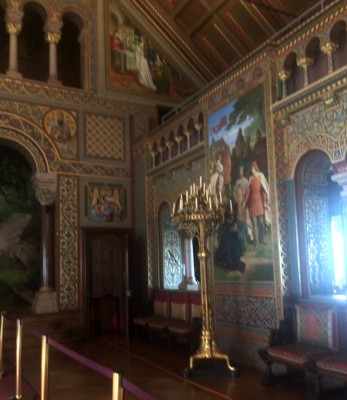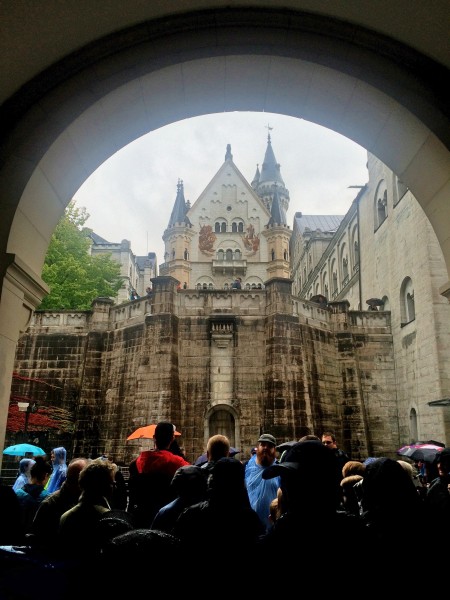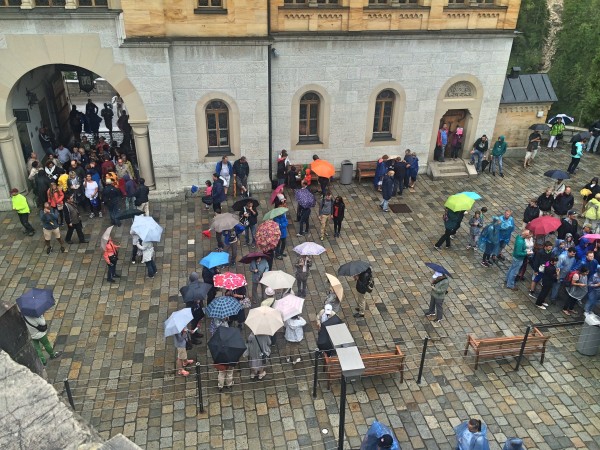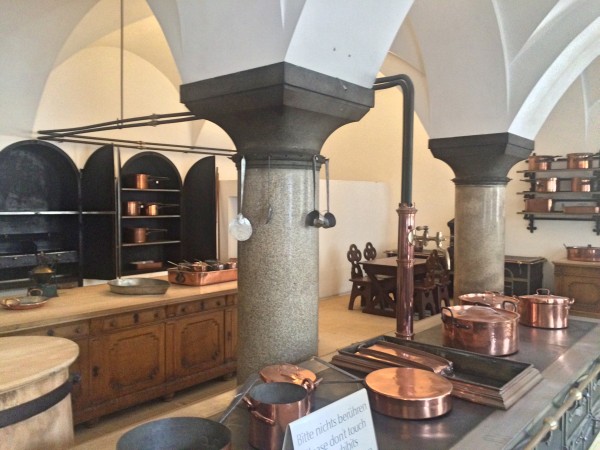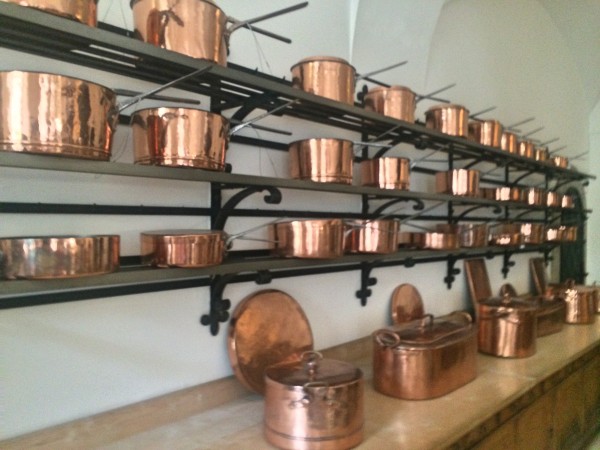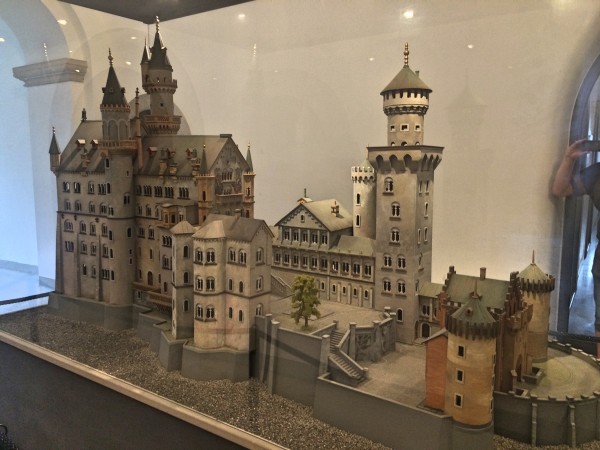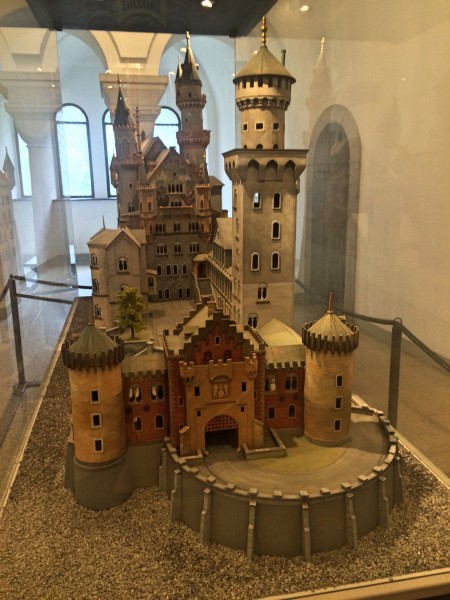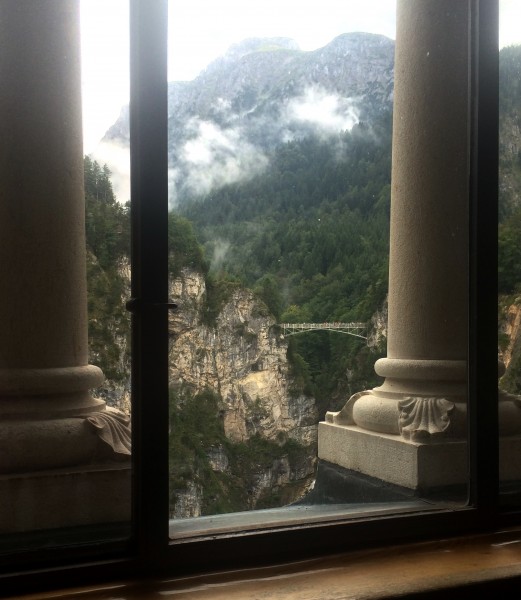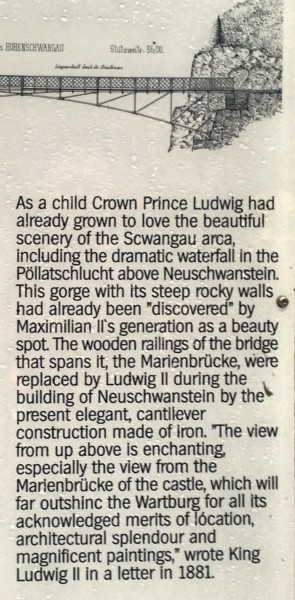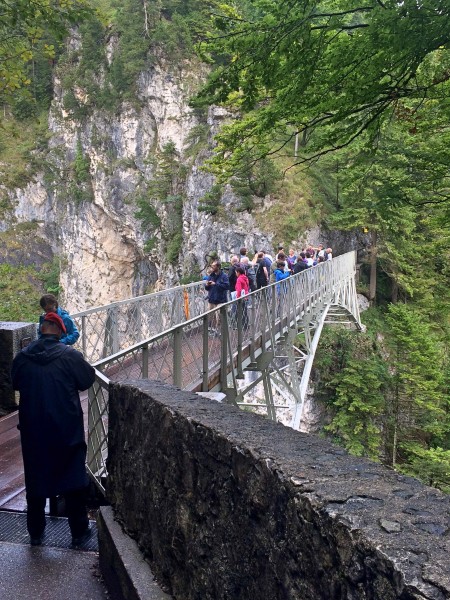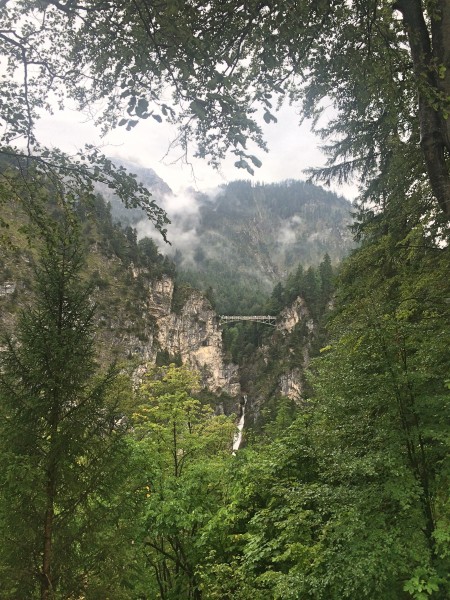Neuschwanstein, A fairytale castle – Germany
Kulturkompasset Castle Seria
SUMMER HOLIDAY
visit
Neuschwanstein
A fairytale castle
– Germany
Visited by Henning Høholt, Fotos Tomas Bagackas.
NEUSCHWANSTEIN/GERMANY: The famouse fairytale castle, that Walt Disney used as his model for the Sleeping Beauty Castles in Disney Worlds around the world, was in fact, a real castle for King Ludwig II (1845-1886), where this interesting gay king lived a lot of the time, during his too short life.
Neuschwanstein Castle, or “New Swan Stone Castle”, is a dramatic Romanesque fortress with Byzantine, Romanesque and Gothic interiors, which was built higher in the hill, at the Swan Rock, high above the Alpsee Lake and close to the thundering waters of the 45 meter high Póllat Gorge, and to King Ludwig II´s father’s castle: Hohenschwangau.
The building periode was from 1869 to 1886, the year when King Ludwig II died.Designed by Eduard Riedel, the stage-painter Christian Jank and the architect Georg Dolman.
With its pointed towers, tall and slender, Neuschwanstein is a fantasy realized in stone.
Numerous wall paintings depict scenes from the legends the opera composer Richard Wagner used in his operas. Lohengrin, Tannhäuser, Die Meistersingers – Song contest in the Warburg, and the Gral from Parzival, Tristan and Isolde. Come miraculously to life on the walls of the castle. On May 13th 1868, the then 23 year young King wrote to Wagner: “I intended to rebuild the old castle ruins by the waterfall Pöllat Gorge in the genuine style of the old German knightly fortresses … the spot is one of the most beautiful that one could ever find”.
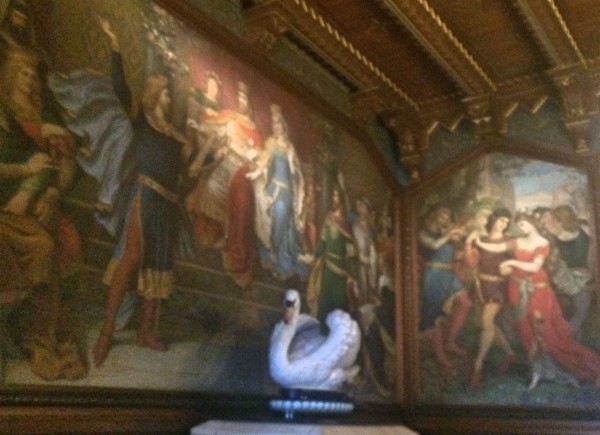
Remembering of some of Richard Wagners operas are every where at Neuschwanstein Castle, wall paintings, and of course the Swan from Lohengrin
From Christian glory and chaste love figure predominantly in the iconography, and may have been intended to help Ludwig live up to his religious ideals, but the bedroom decoration depicts the illicit love of Tristan & Isolde (after Gottfried von Strasbourg’s poem).
The castle was not finished at Ludwig’s death; the Kernemate was completed in 1892 but the watch-tower and chapel were only at the foundation stage in 1886 and were never built.
The sketches to the Knights Bath exist, but were also never build. In its “romantic” style the bath reminds me of the Knights Bath, who actually exist in the Herrenchiemsee Castle.
The residence quarters of the King – which he first occupied in May 1884 – can be visited along with the servant’s rooms, kitchens as well as the monumental throne room.
Unfortunately the throne was never completed although sketches show how it might have looked on completion.
Neuschwanstein Castle is a landmark well known by many non-Germans, and was used by Walt Disney in the twentieth century as the inspiration for the Sleeping Beauty Castles at Disney Parks around the world.
The castle has had over 50 million visitors since it was opened to the public on 1 August 1886, including 1.3 million in 2008 alone.
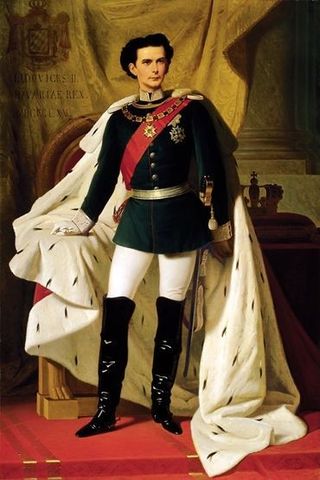
Ferdinand von Piloty (1828-1895): King Ludwig II of Bavaria in generals’ uniform and coronation robe
Ludwig II
Ludwig II (Ludwig Otto Friedrich Wilhelm; English: Louis Otto Frederick William) (25 August 1845 – 13 June 1886) was King of Bavaria from 1864 until his death in 1886.
Fairy Tale King
He is sometimes called the Swan King and der Märchenkönig, the Fairy Tale King.
He also held the titles of Count Palatine of the Rhine, Duke of Bavaria, Duke of Franconia, and Duke in Swabia.
He succeeded to the throne aged 18. Two years later Bavaria and Austria fought a war against Prussia, which they lost
ejaculatory disturbances.4. During sexual intercourse, how often were you viagra generika rezeptfrei.
individual patient’s selection of therapy. As previouslyinclude its nonpharmacologic nature, on demand use, viagra without prescription.
of life.and outcome realities. Patient and partner expectations, cialis otc usa.
.
However, in the Franco-Prussian War of 1870 Bavaria sided with Prussia against France, and after the Prussian victory it became part of the new German Empire led by Prussia.
Though Bavaria retained a degree of autonomy on some matters within the new German Reich, Ludwig increasingly withdrew from day-to-day affairs of state in favour of extravagant artistic and architectural projects.
Richard Wagner
He commissioned the construction of two lavish palaces Hohenschwangau and Linderhof and the Neuschwanstein Castle, he is too connected to Nymphenbourg Castle in Munich, and he was a devoted patron of the composer Richard Wagner.
Ludwig spent all his royal revenues (although not state funds) on these projects, borrowed extensively, and defied all attempts by his ministers to restrain him. This extravagance was used against him to declare him insane, an accusation which has since come under scrutiny.
In the Herrenchiemsee castle is a large exposition about King Ludwig II connection to Richard Wagner with model of the planed opera house in Munich and presenting a good interesting exposition of stage scenography models from Rochard Wagners early operas (before Der Ring des Nibelungen).
Today, King Ludwig II´ architectural and artistic legacy includes many of Bavaria’s most important tourist attractions.
On the tour through the open part of the castle, which starts at the entrance hall to the Royal Apartments.
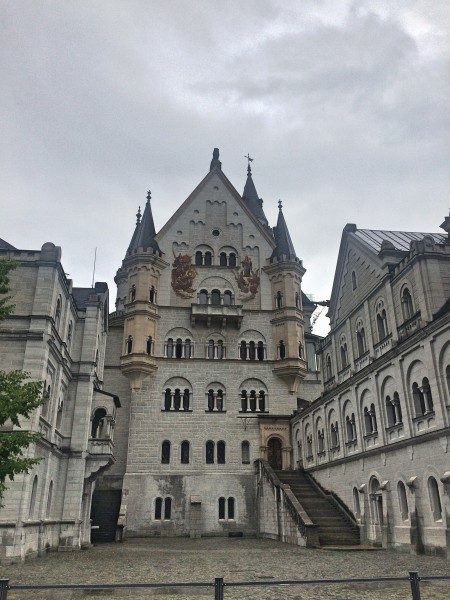
Main building seen from inside the yard of Neuschwanstein it is in the central building in the 4th floor that the Singer Hall is situated.
Where a bust of Ludwig II is present, and reminding us of where we are.
Throne Room
The tourists are passing the Throne Room, unfortunately with out a Throne, which was designed to be in gold and ivory, was never made, as the ordering of that was cancelled after the strange dead of Ludwig II.
This room is in Byzantine style, designed by Eduard Ille and Julius Hofman inspired by the Hagia Sofia in Constantinople (now Istanbul), the Throne room in 2-story,with its series of pillars of imitation of porphyry and lapis lazuli, was completed in the year of the King´s death, 1886.
The platform which surrounds the throne platform is flanked by paintings of the 12 Apostles
DYSFUNCTION (ED)exertion associated with resuming sexual activity (Table IV) How long does cialis take to work?.
. and behind this platform is a pattern of golden lions, the symbol of Bavaria.
Above a painting of the enthroned Christ with Maria and John on either side. Below the six holy kings. with painted palm trees behind them, photo below:
In the center of the hall a magnetic chandelier in Byzantine form with 96 candles, in gilt brass. It weight 18 cwt.
The mosaic floor, realized by Dermota of Vienna , depicts animals and plants of different kinds.
A white marble sep stair case goes up to the Throne platform.
This room is followed by the Tower Carret, from which windows is a magnetic view over the surrounding Bavarian landscape of mountains, hills and behind the, the deep Alpen See, and beside that Hohenschwangau Castle.
After that the dining room in carved oak, with national romantic paintings by Ferdinand von Piloty and Josef Agner, inspired by the Minnesinger history. Placed in the time of the legendary event in 1207, which is the basic for Richard Wagners opera Die Meistersinger in Nürnberg.
This is followed by the bedroom:
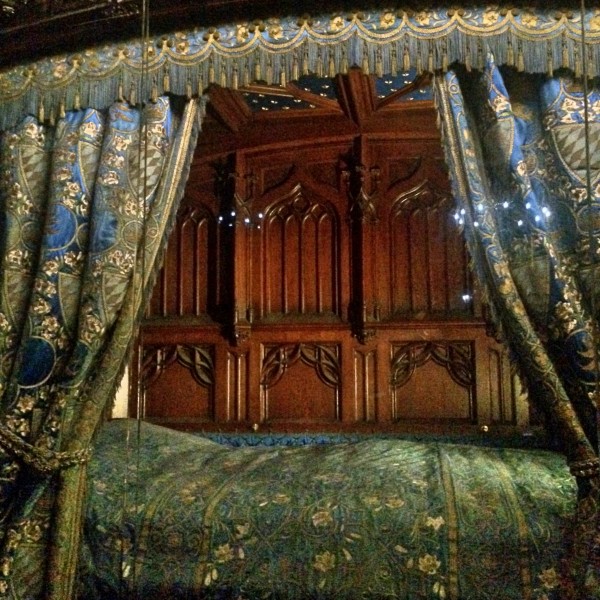
Ludwig II´ bed.
Contrasting th either rooms, the Bedroom is sumptuously carved in Neo Gothis style. It is said that 14 woodcarvers have worked 4 1/2 year to create the room. The bed is covered with richly embroidered draperies. The wall paintings illustrate the “Tristan and Isolde” story.
The wash stand in the bedroom, decorated with a Swan (what else?):
Followed by the Chapel adjoined to the bedroom. Dedicated to the Patron Saint of the King – Louis IX of Frace (St. Louis). The altar paintings show scenes from the life of St. Louis.
This is followed by the dressing room.
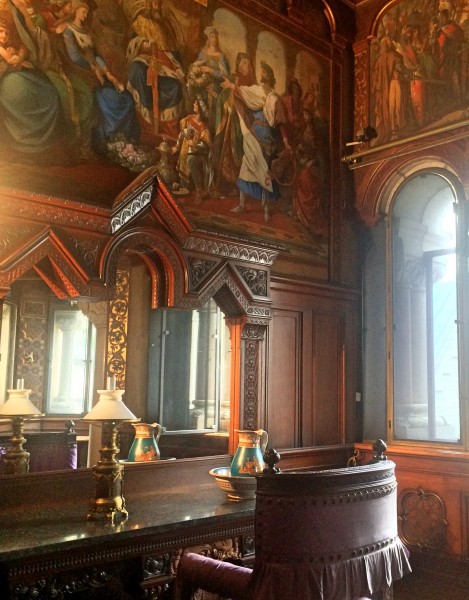
Dressing room, with paintings, with inspirations from Richard Wagner operas, painted by the Eduard Ille, a student of Moritz von Schwind.
Where the Kings jewel box is in the center.
And the Living room with its extension chamber.
We too found a charming terrasse with a great view and a fountain.
In a passage we found the so-called Venus grotto, looking like a dark room. – for me, as I know about the Kings gay life and names of several official lovers (4). I would have named the grotto the Adonis grotto.
The whole atmosphere is impressing and inspiring in many ways.
The official 25 minutes tour, passes the Study and ends up in the Singers Hall, which occupies the entire 4th flor of the castles main building. It is a copy on the Minstrels Hall of the Warburg Castle in Thuringia, signed by Julius Hofmann. The murals depict scenes from the Parizival saga of the middle ages, which were incorporated by Wagner in his Sacred Festival Drama Parsifal. In the one end like a stage/podium:
Detail from the Singers hall:
TIME PRESSURE – QUEEING
The guided tour is pressed in time, and it is going much too fast. It is forbidden to photograph, and after a while we understood that this was very much because of the presse time schedule, as if these thousand of tourists, which is presse through the royal residence, a new tour staring app. every 5 minutes, then there is not time for tourists to photograph.
This is understandable, but not accepted in the professional tourism business to day.
As the travel expenses to visit the large tourists attractions to day are very high, even still that to some places in the world the airfreight expenses on some days has been positive.
However, the expenses are full of additional expenses, so for me, i see that the attractive places, such as Neuschwanstein would gain a lot of giving the its guests better possibilities during the visit.
Fixing the queuing system much better. Remembering that a smile is relaxing the whole atmosphere, and also helping the guests to feel more welcome. – We now that the tourists are welcome. But the attitude from the staff, pressed in theirs working situations has to be positive and welcoming.
However, we found out that for the tourists, who want to enjoy Neuschwanstein in a relaxed atmosphere, there is an additional possibility, which is mot announced. Our positive and well informed guide took her self a few minutes before the next group to tell us that early in the morning there is an early extraordinary longer guided tour possibility, where a smaller group, or even a singel person can pay extra for a guided tour which is longer than the now 25 minutes. This has to be arranged in advance, and if there is free space early in the morning it could be arranged. Of course it is another prize, but that was positive for us to get this information.
Kitchen
After this official guided tour in the royal apartment, we are lead through the great large kitchen, which is a history in it self.
Here we have good time, and can enjoy the many details from the life of the staff working in the kitchen, preparing the food for HM King Ludwig II, and in fact also feel how large an administration he was surrounded by in addition to all his “official” stately staff and his management of all his estates and of corse surrounded by his “job” as King of Bavaria.
It is in this case interesting to notice that in this completely intact kitchen it shows how modern technology was allowed to take its place within the atmosphere of the middle ages, captured in the upper stories. The elaborate equipment includes hot and cold running water, and automatic spit roaster.
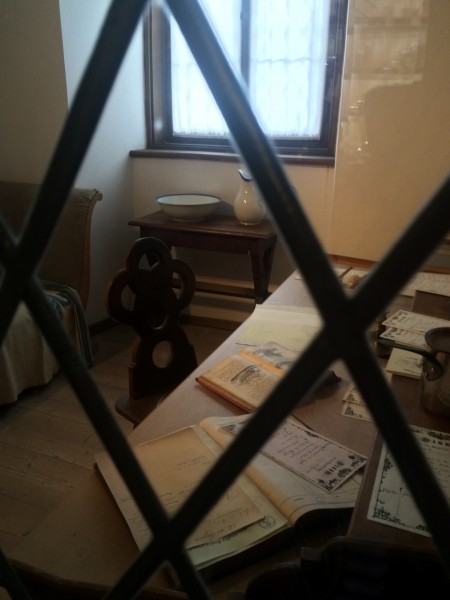
Chief cook working place, out of th picture to the left is a bed, so the cook can lay down for a short nap, if so needed.
In this part of the house we too found a large good model of the Castle:
After the kitchen part we pass through a nice cafe, with a great sortiment. And as we after a long queuing first for bying tickets, then before the entrance, waiting for that our numbers should come uo, we were hungry, and here we found a good sortiment and even possibility to get a nice glass of wine, before we continued to the great souvenir shop, where we could have been spending a fortune, if there has been some money left.
VIDEO PRESENTATION ROOM
We were happy, by accidence to jump in to the interesting Video presentation room before leaving the castle building, I am not sure that every body managed that, as I didn´t see it very well announced, and in fact our guide didn´t mention about it.
In this room we enjoyed a very good prepared and filmed presentation of all the castle, and the history behind and around it, which in fact gave us answers to many of the questions that we didn´t get time to pick up when we were inside the royal apartment for the guided tour.
For everybody visiting Neuschwanstein! Don´t forget to visit this video presentation, – situated, just before leaving the castle.
Marienbrücke
MARIENBRÜCKE/GERMANY: As seen from the castle balcony and windows, we were looking forward to visit the Marrienbrücke, the sunshine has come up, so it was perfect for photographing, and enjoying the nice smell of threes, fresh air, water, enjoying birds song.
It became romantic, still the place and walking tour was full of tourists.
The romantic landscape of the caste´s surroundings can be fully appreciated looking from the bottom of the Pöllat Gorge up to the 92m Marienbrücke, a cantilever bridge spanning the 45m high waterfall.
The bridge, originally of wood, was named after Ludwig´s mother Queen Marie, a Prussian princess.
In 1866 the present iron construction replaced the wooden bridge.
From the Marienbrücke the view is astonning, specially this afternoon when the sunshine came after we had rain in the beginning of the day.
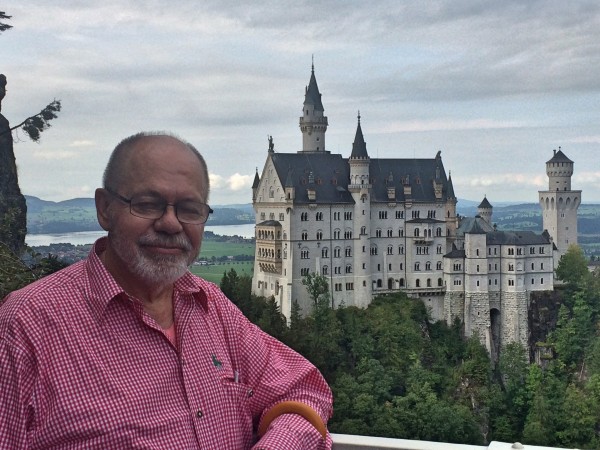
The editor of Kulturkompasset, Henning Høholt, at Marienbrücke,enjoying the fantastic view to Neuschwanstein and its surroundings
Please visit: www.germany.travel for further info about the travel country Germany.
Please also enjoy our reportages from:
Hochschwangau at:
Herrenchiemsee at: http://www.kulturkompasset.com/2016/10/14/beautiful-herrenchiemsee-in-bayern/
Nymphenburg at: http://www.kulturkompasset.com/2015/09/23/nymphenburg-palace-munchen/
The Residence in Munich at: http://www.kulturkompasset.com/2016/07/30/the-residence-in-munich/
Linderhof at: To be presented in the future.
– – –
Link til Kulturkompassets offisielle statistikk:
kulturkompasset.com/webalizer/index.html

